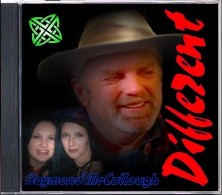
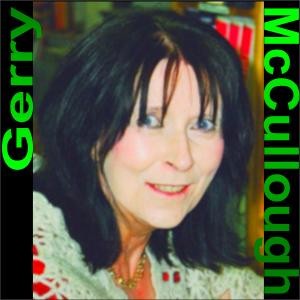
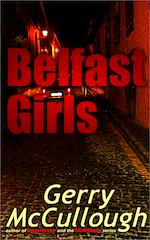
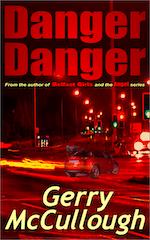
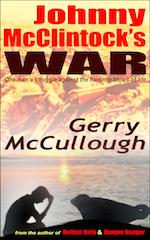
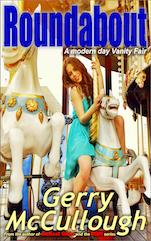
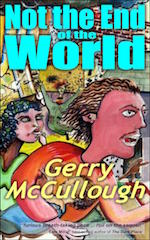
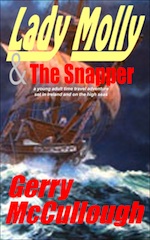
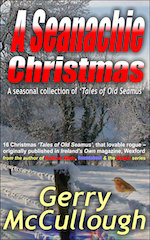

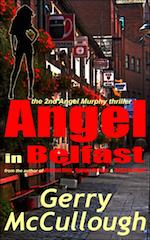
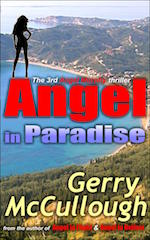
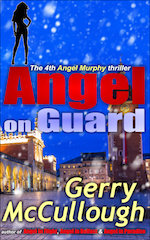
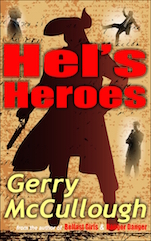
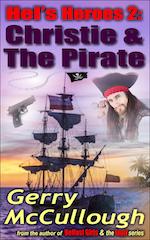
 order NOW!!
order NOW!!
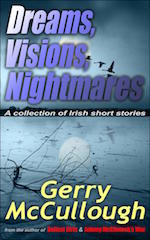
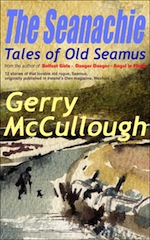
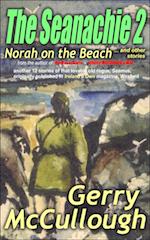

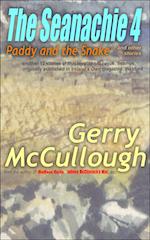
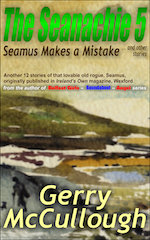
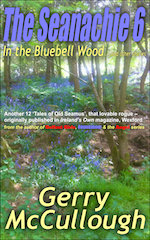
           | ||||||||
 Listen to Celtic Roots Radio 24/7 Shoutcast station NOW! | ||||||||
| ||||||||
In addition to producing many articles/reviews in the past for former Irish magazine, ‘Bread’, Gerry has written articles for other publications, including:

Life of Angel: Angel on Guard by Gerry McCullough –

Gerry McCullough – the Story of a Belfast Girl –

The Pleasures and Pains of Becoming A Writer –
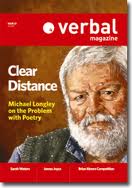
A Divided Inheritance –

Aut(h)onomy on the internet –

Patrick Brunty and the Brontë’s Irish roots –
Not everyone knows that the famous Brontë sisters, Charlotte, Emily and Anne, were one generation removed from Irish.
Patrick, the girls’ father, was born in County Down, in the townland of Emdale, between Banbridge and Rathfriland.
Patrick is a fascinating character.
Most people, if they are aware at all that the father of Charlotte and Emily Brontë was Irish, have heard of him through the autobiography of Charlotte Brontë written by Elizabeth Gaskell.
Mrs Gaskell took her information about Patrick from a dismissed servant girl. Not the most reliable source, perhaps?
From this servant Mrs. Gaskell repeated the story that Patrick, in a spurt of Puritan hatred of finery, rushed up to his wife’s room one day, in her absence, and pulled out a dress which Maria had never worn, as being too fine for her role as a preacher’s wife, but which she had kept as a reminder of what might have been, and slashed it to ribbons.
Another story tells us that when a friend gave the children some coloured boots, Patrick, feeling a revulsion against the worldliness of this attire for his children, refused to allow them to wear this unnecessarily attractive footgear, threw the boots into the fire, and presided over their destruction, despite the horrible smell of burning which permeated the house.
The unsupported evidence of a sacked employee is not gospel.
What do we know about Patrick apart from this?
The true Patrick was a clever, lively, good-looking young Irishman, whose future wife, writing to him during their courtship, addressed him as, ‘My dear saucy Pat.’
Patrick was a youngster of fierce ambition. Beginning life in a linen factory, he became a blacksmith’s apprentice, and then, aged sixteen, set up his own school, and began to take in pupils. He must have been largely self-taught. During the 1790’s he taught in Glascar School, and the story goes that he was dismissed for forming too close a romantic attachment to one of his pupils. This seems suspiciously similar to the experiences of his daughter Charlotte, who fell in love with her married French professor, and his son Branwell, who while working as a tutor had an affair with his employer’s wife. Do these things run in families, or was the rumour invented later, in the light of the son’s and daughter’s stories?

Be that as it may, Patrick went on to teach in Drumballyroney School, and in 1802, at the age of twenty five, he won a scholarship to St John’s College, Cambridge.
This was an outstanding achievement for a self-taught Irish peasant boy of those times.
We are told by his contempories that he was a popular young man, well liked by his classmates.
It was at this point that Patrick, who until now had spelt his name, like his father before him, as Brunty, decided that a change was necessary. Did he believe that he needed to escape from his Irish roots if he was to achieve anything? Or did the decision to adopt the name of Brontë, a title recently awarded to Lord Nelson, spring from an ardent hero-worship of the sailor whose name and victories were on everyone’s lips? Patrick’s children, as we know them from their writings, were hero-worshippers one and all. It seems likely that the decision sprang from both these elements. Then, as now, to be Irish rather than English was a definite career handicap.
So here is the brilliant young red-haired scholar, created by his own fierce ambition from the bare-foot ‘wild Irish boy’ of such a short time before, on the threshold of a new life, working with stubborn determination to pass his BA exams and to become an ordained clergyman of the Church of England.
In 1806, after hardships we can imagine, he reached his goal, took his BA, and was at first ordained as a deacon.
The records show that at this stage, he returned home for an extended visit. Perhaps this was his first return, since travelling would have been an expense not lightly undertaken. While there, he preached in the pulpit of Drumballyroney church, beside the parish school. Returning to Cambridge, he was ordained as a full clergyman in 1807.
Patrick was an ardent young man, as we know from his poetry, now in his late twenties, and finally able to support a wife. He had a short lived romance with one Mary Burden, but then met and fell in love with Maria Branwell, and carried her off as his wife in 1812.
Meanwhile, Patrick’s other ambitions were pushing their way out. In 1811 his first book of poetry, ‘Cottage Poems’, was published, to be followed in 1813 by ‘The Rural Minstrel’. These poems are not great. But they are interesting, because they show so much of the romanticism, the love of wild nature and the strong emotions which make his daughters’ work outstanding. They also reveal a continuing love for his own country and its beauty, for instance in ‘The Harper of Erin’.

Patrick, who had already achieved so much, was eager for success as a writer. His daughter Charlotte, writing to the Poet Laureate, Southey, at the age of twenty, told him that she "longed to be known." This burning ambition, which was to push her into the forefront of literary success, was clearly inherited, along with the stubborn determination which made it possible, from her Irish father.
In 1820 Patrick was given the perpetual curacy of Haworth in Yorkshire, and moved there with his six young children. Within a year his wife was dead, from cancer. Her sister, ‘Aunt Branwell’, came to help keep house. From then on, Patrick taught and encouraged his children with her help, taking pride in their early intelligence. The tragic experiment of sending the four eldest girls away to school resulted in the deaths of Maria and Elizabeth, the oldest of the family, from poor nourishment and bad hygiene. At a later stage both Charlotte and Emily were sent to a better school. Meanwhile Patrick taught the three remaining girls and their brother Branwell at home. Even Mrs. Gaskell tells us of the occasion when Patrick lined up his four remaining children, and asked them a series of questions about their ambitions, and about the people they most admired. Clearly she had this information from Patrick himself, still proud, over thirty years later, of his children’s intelligence and ambition.
As an experienced teacher he could pass on to them his own enthusiasms. From him they would have learnt to love the wild countryside around them, to read widely and vociferously, to feel deeply, to express their feelings frankly, and to desire, above all else, fame as writers. What more could any father give his children?
His daughters Charlotte and Emily, are probably best known for the heroes they created, Rochester and Heathcliff. Fierce, wild, independent men, both. But most noticeably, they are matched with equally independent women, who are accepted as equals by their men. How much of this came from the influence of Patrick Brontë, encouraging his daughters to see themselves as individuals, untrapped by society, as he himself had done?
How ironical is it that Patrick himself, proud of his daughters’ fame, asked Mrs. Gaskell, as a friend of his daughter Charlotte, and a writer herself, to consider writing an autobiography of Charlotte?
Mrs. Gaskell enthusiastically agreed. She had long had her own ideas about Charlotte and her background. Her impression of Patrick Brontë was of a twin to Mr. Barrett, as in ‘The Barretts of Wimpole Street’, that is, a strict early Victorian father who dominated his children.
Poor Patrick! At the age of eighty, what a horror for him to read of himself as a tyrant whose influence had damaged his daughters, instead of an encouraging influence for ambition!
A visitor to Haworth while Patrick was still alive has given us a better picture of the man. Thomas Ackroyd, received courteously by Patrick Brontë and invited to dinner, worked up the courage to ask him if everything in Mrs. Gaskell’s account should be taken for gospel. He was answered, wryly, "Mrs. Gaskell is a novelist, you know, and we must allow her a little romance, eh? It is quite in her line."
What a kind response.

It is typical of this country that the physical remains of the Brontës have long been destroyed. The homes of Louis MacNiece, Brian Moore, and, nearly, C.S. Lewis, similarly went. Patrick Brontë’s birthplace was ignored and allowed to fall into ruin, until the mid fifties. The home in Haworth, Yorkshire, on the contrary, has been preserved and is the centre for literally hundreds of thousands of pilgrims every year.
Since 1956, the remains of the cottage where Patrick was born have been preserved, with a few other relevant buildings, by the Brontë Homeland Trust. It is well worth a visit. It is amazing to stand inside the ruined walls, and to realise that from these tiny rooms sprang the genius that became known to the world as ‘the Brontë Sisters’.

Poems | Articles | Photos | Podcast | Shop

Precious Oil | Photos | Music | Books | Video/DVD | About POP | Contact us
